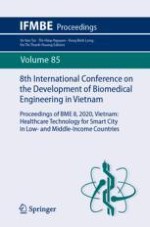2022 | OriginalPaper | Buchkapitel
Noninvasive System for Tracking Naïve Induced Pluripotent Stem Cells During Reprogramming
verfasst von : Thi Hai Yen Tran, Aya Fukuda, Koji Hisatake
Erschienen in: 8th International Conference on the Development of Biomedical Engineering in Vietnam
Aktivieren Sie unsere intelligente Suche, um passende Fachinhalte oder Patente zu finden.
Wählen Sie Textabschnitte aus um mit Künstlicher Intelligenz passenden Patente zu finden. powered by
Markieren Sie Textabschnitte, um KI-gestützt weitere passende Inhalte zu finden. powered by
